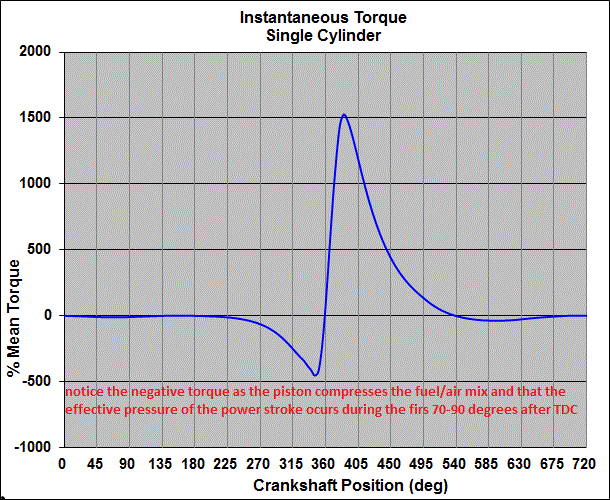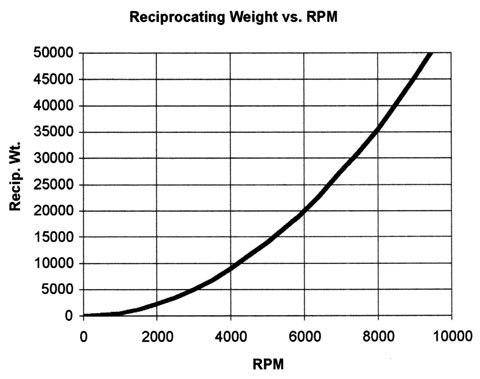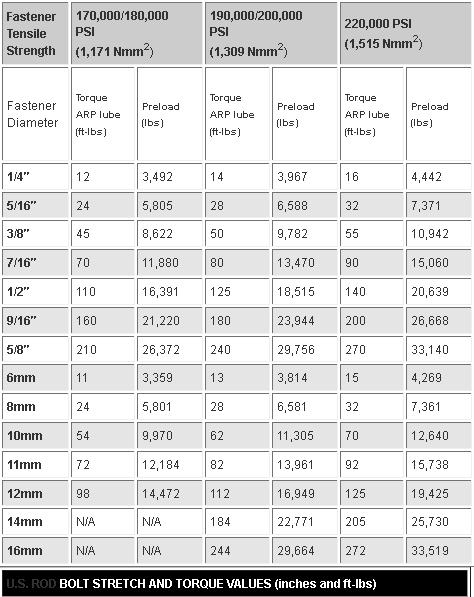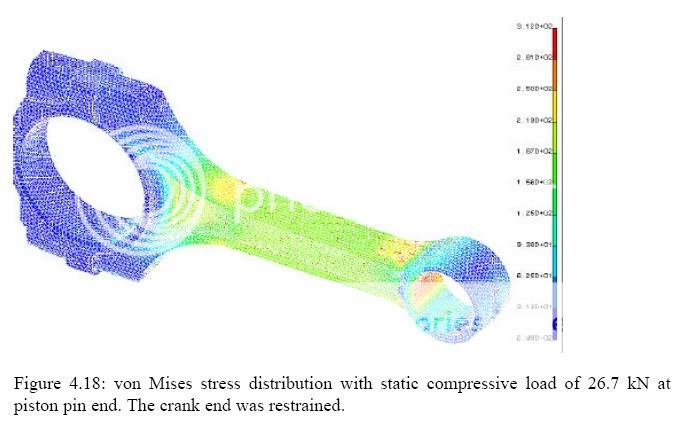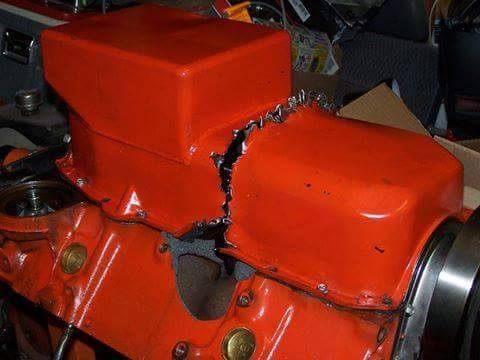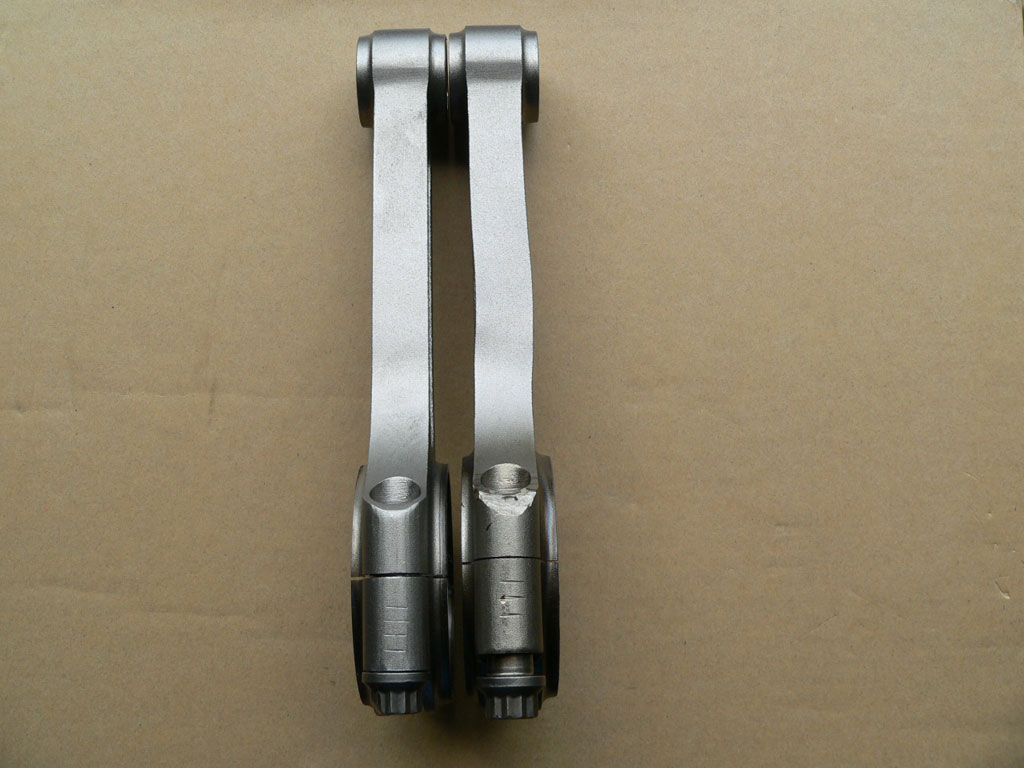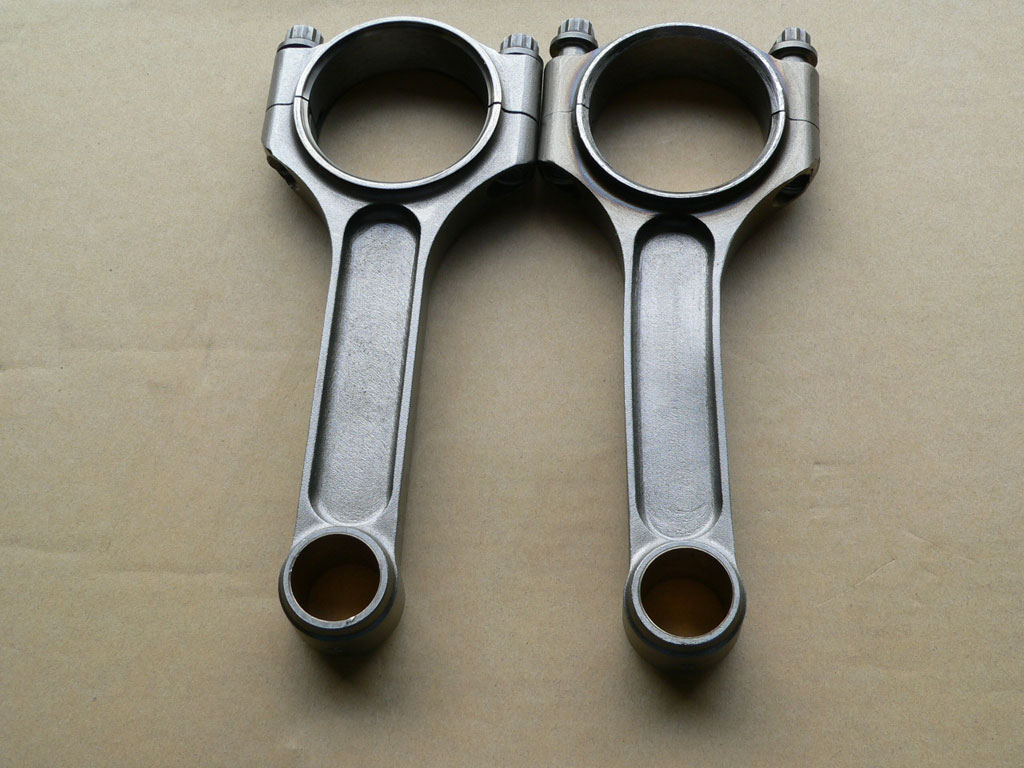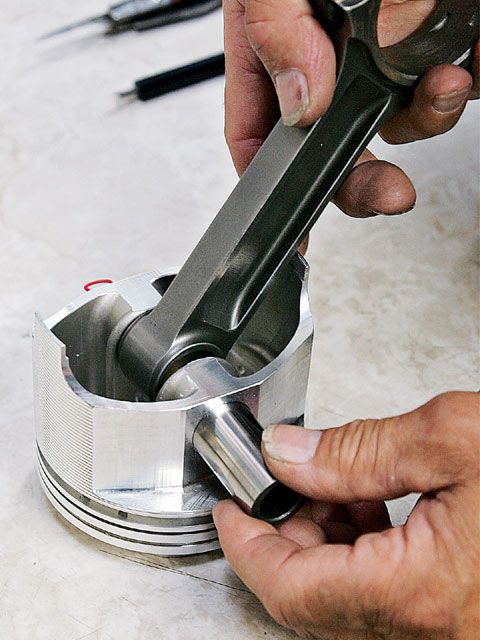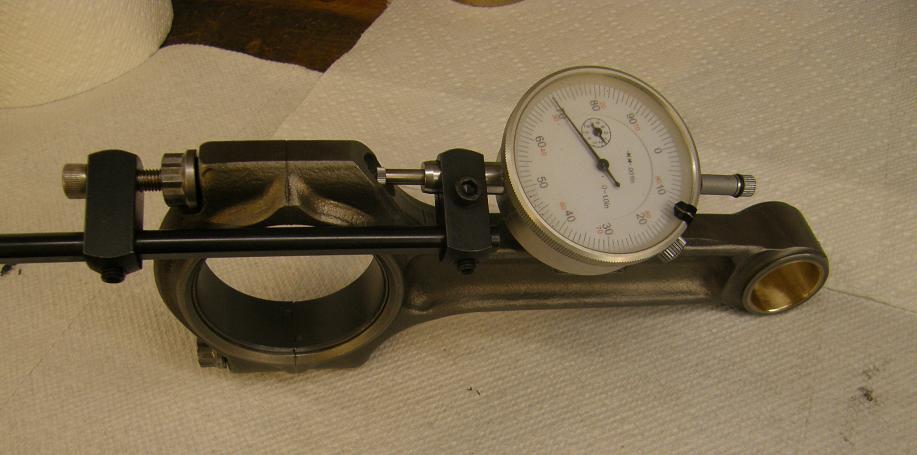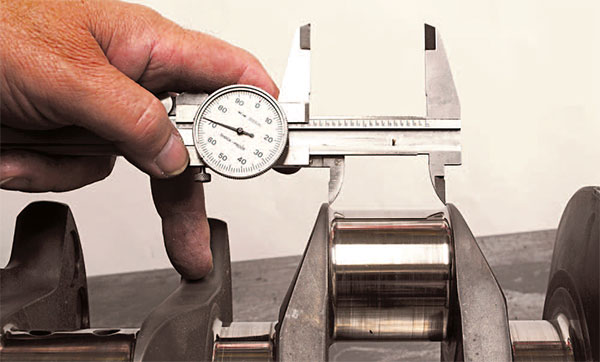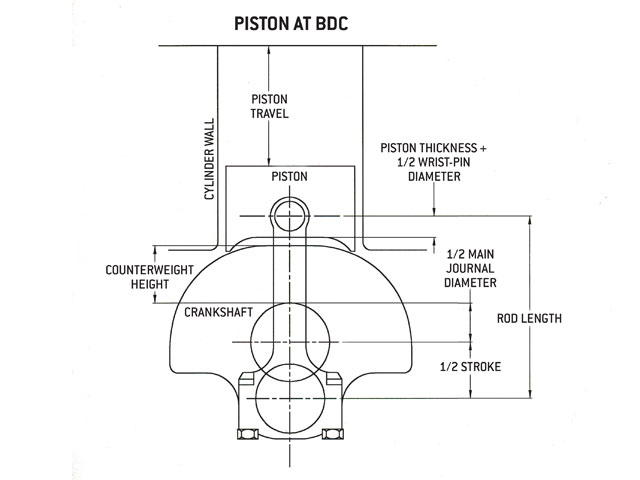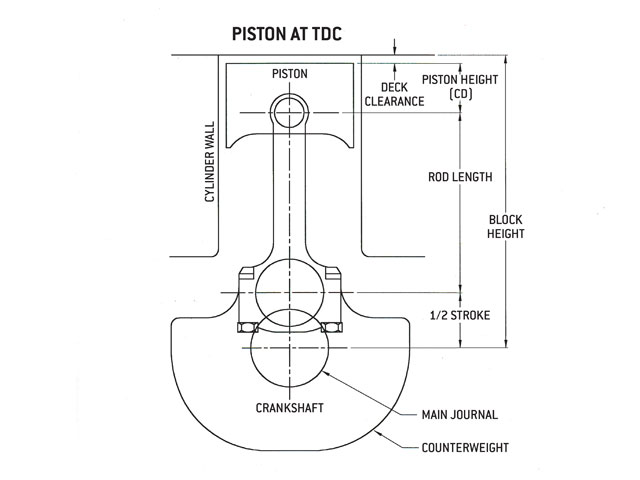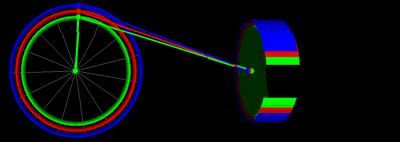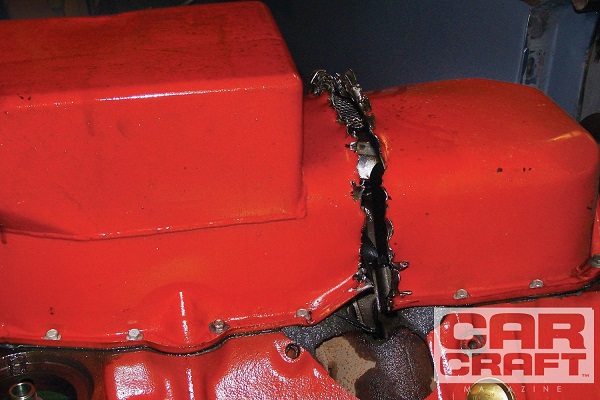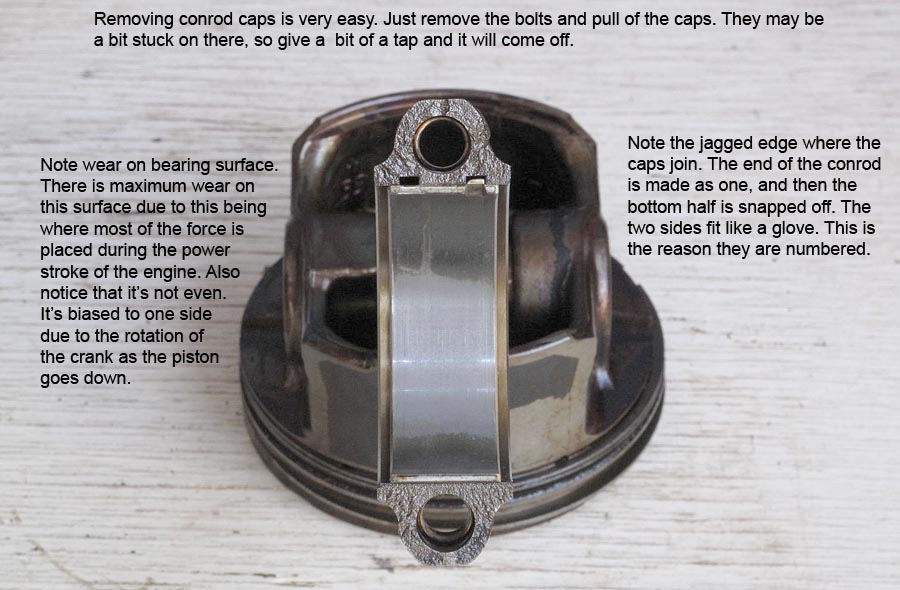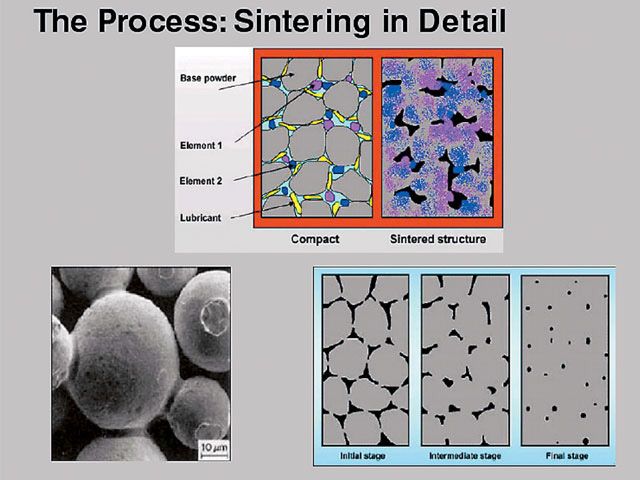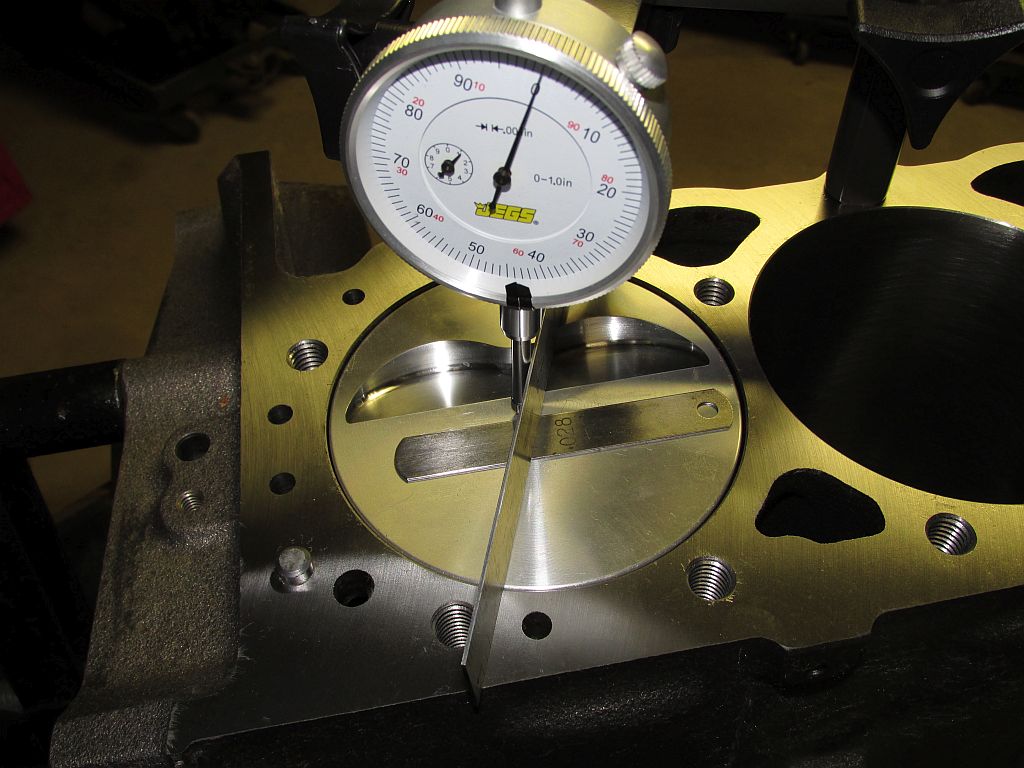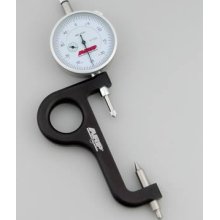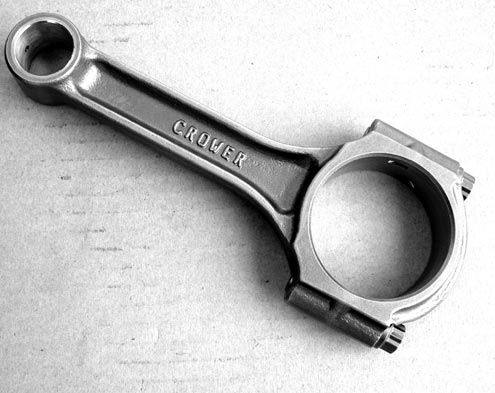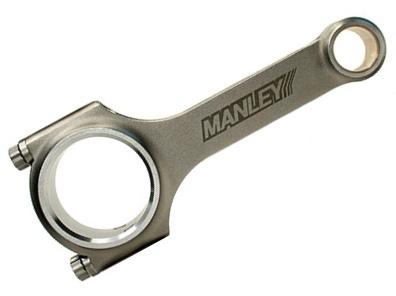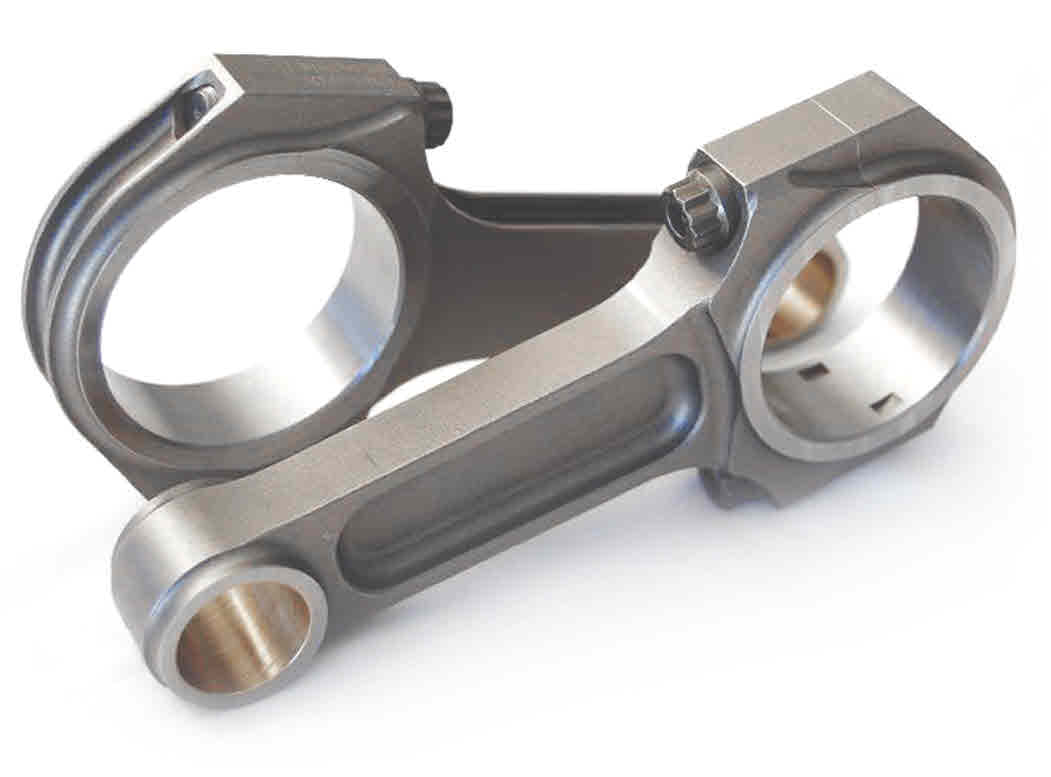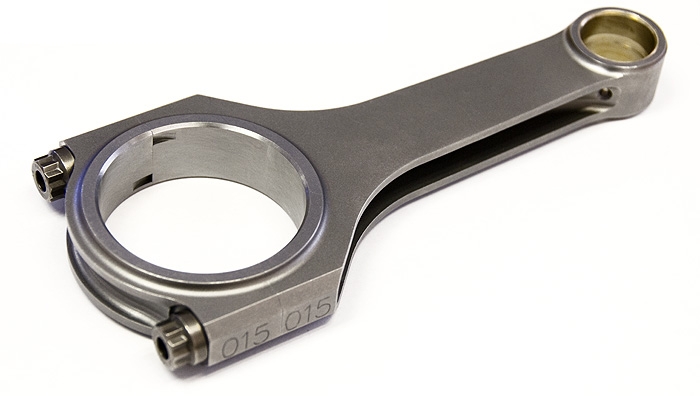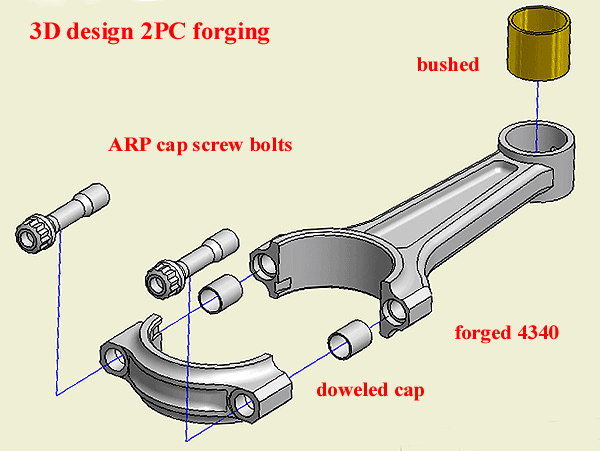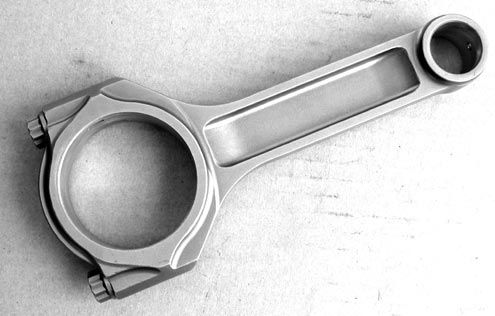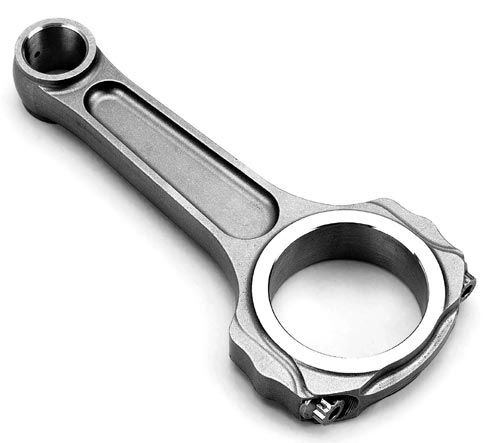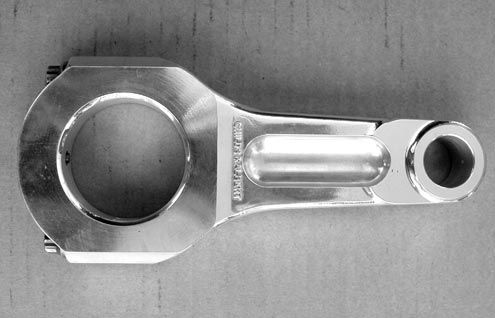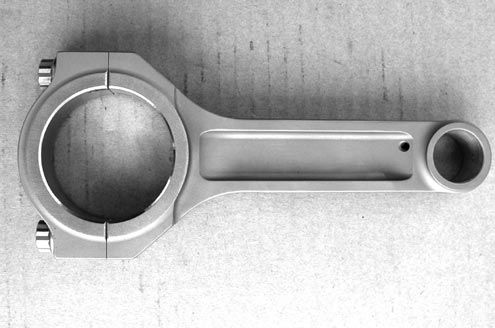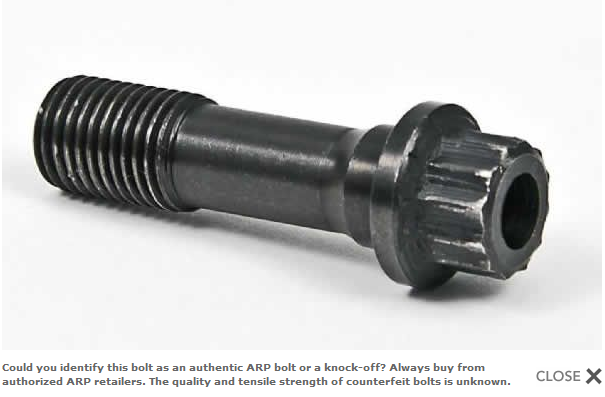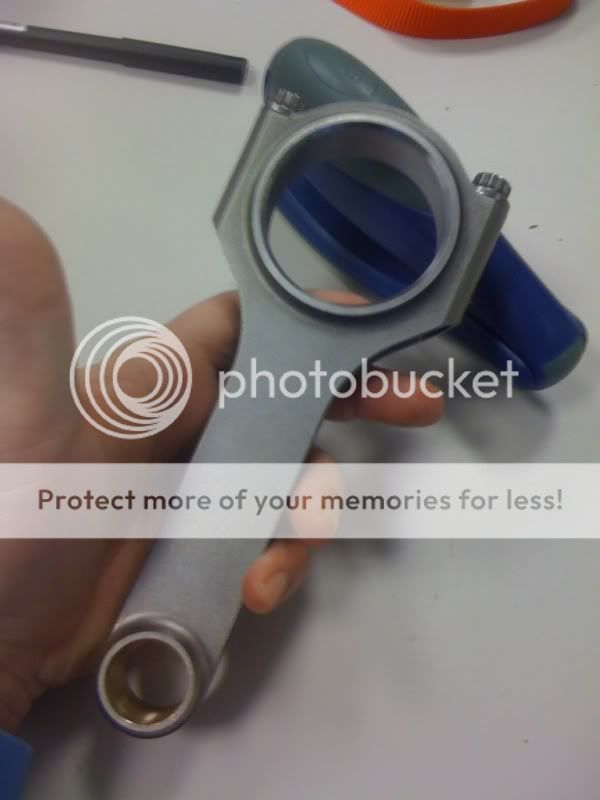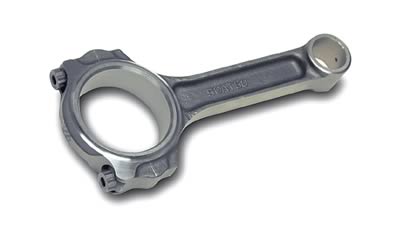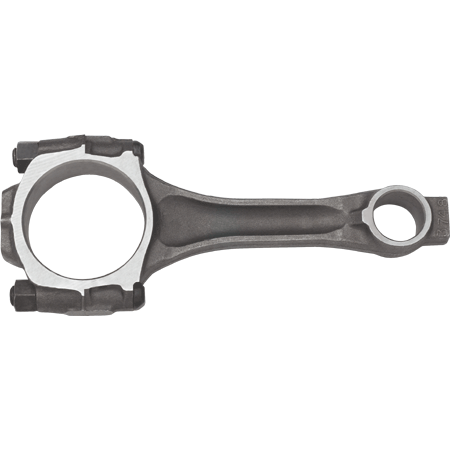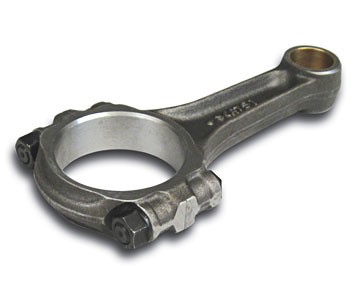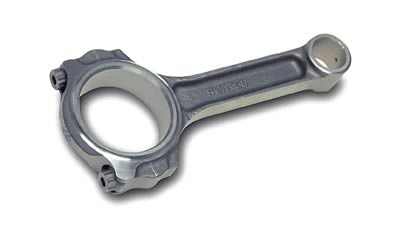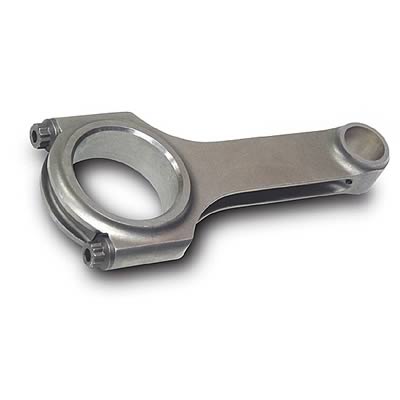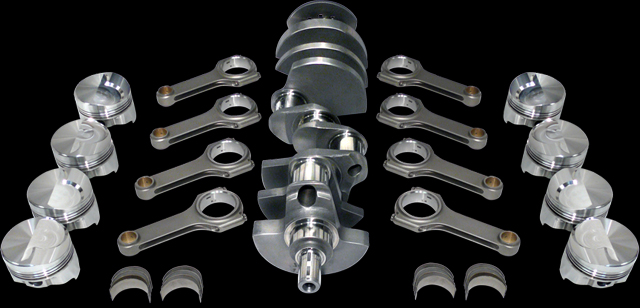you might want to read thru these links for info also
first lets point out how you calculate 4000 Feet Per Minute, in piston speed, which in most chevy v8 engines is a reasonable durability limit
in one revolution a piston moves from TDC (top dead center )TO BDC (bottom dead center)and back to TDC, so you calculate the distance traveled as twice the stroke, and 4000 feet per minute is 12" per minute times the rpms, if you do some research into connecting rods youll quickly find that there are several different CLASSES and strength levels so youll need to select a crank shaft and connecting rod deigned to operate at the power band, and stress levels you intend to subject that engine too!
As with most components you tend to get what you pay for to a great extent and companys like (CROWER and OLIVER will gladly provide you with much stronger AND MORE EXPENSIVE) connecting rods , good moderately priced connecting rods are available from SCAT
http://www.oliverracingparts.com/
https://www.crower.com/connecting-rods.html
http://www.scatcrankshafts.com/rods/chevy-rods/
but anyone who understands engines understands that piston speed and rod bolt stress are far from the only factors limiting an engine rotational speed, most valve trains in stock engines, and valve springs and cam lobe acceleration rates are limited to about 5800rpm-6200rpm, and air flow rates or port stall speed could very easily limit power, as can a restrictive exhaust, an ignition systems, rpm limitations or a lube system, not being able to keep up with demand
thus if you have a 3" stroke, 4000 fpm=48,000 inches divided by 6"=8000rpm red line in theory, for piston speed, on something like a 283 sbc
thus if you have a 4" stroke 4000 fpm=48,000 inches divided by 8"=6000rpm red line in theory,for piston speed,
on something like a 454 bbc
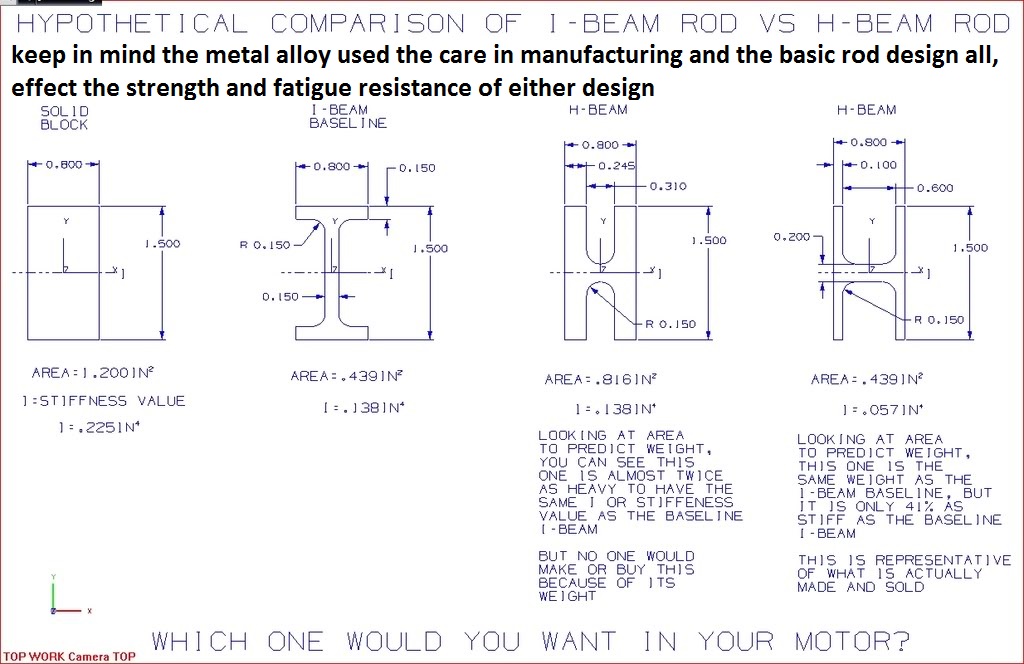
READ THESE LINKS
viewtopic.php?f=53&t=1168
http://www.superchevy.com/how-to/engine ... m#cxrecs_s
if you care to get into the math and engineering, heres some linked info
I went thru years of this in college and still get head aches thinking about the math
https://www.forging.org/system/files/fi ... alysis.pdf
http://www.chevyhardcore.com/tech-s...part-1-building-the-long-block-at-chevy-perf/
http://www.hotrod.com/techarticles/hrdp ... ting_rods/
http://emweb.unl.edu/Mechanics-Pages/Lu ... s%20VI.htm
http://www.iosrjournals.org/iosr-jmce/p ... df?id=7622
http://www.ijsrp.org/research-paper-021 ... -p1479.pdf
http://www.eng.utoledo.edu/mime/faculty ... 15-624.pdf
http://victorylibrary.com/mopar/rod-tech-c.htm
viewtopic.php?f=53&t=341
viewtopic.php?f=53&t=510
http://www.rustpuppy.org/rodstudy.htm
http://www.iskycams.com/techtips.html#2005
http://www.hotrod.com/techarticles/gene ... ting_rods/
viewtopic.php?f=53&t=10213
viewtopic.php?f=53&t=3540&p=9395#p9395
http://www.compstarcomponents.com/connecting_rods.htm
http://victorylibrary.com/mopar/rod-tech-c.htm
http://www.rehermorrison.com/techtalk/63.htm
http://www.chevy-camaro.com/parts/chevy ... onnect.htm
http://www.hotrod.com/techarticles/stee ... index.html
http://emweb.unl.edu/Mechanics-Pages/Lu ... s%20VI.htm
https://www.lunatipower.com/Category.aspx?id=13
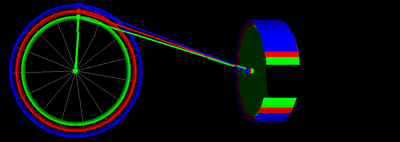
http://www.hcs.harvard.edu/~jus/0303/kuo.pdf
http://www.scatcrankshafts.com/index.htm
http://www.hotrod.com/techarticles/stee ... index.html
viewtopic.php?f=53&t=247
http://emweb.unl.edu/Mechanics-Pages/Lu ... s%20VI.htm
http://www.tomei-p.co.jp/_2003web-catal ... onrod.html
http://www.enginebuildermag.com/Article ... oices.aspx
http://www.youtube.com/watch?v=hp931tDlHoU&NR=1
http://www.youtube.com/watch?v=cJJI9bml ... re=related
IF YOU LOOK CLOSELY AT ALMOST EVERY (CONNECTING ROD) thats failed in almost every engine Ive ever seen or read about its almost never the rod itself, that failed but its the bolts, that stretched or bearings ., lack of lubrication or the cause is trying to compress a bent valve, or busted piston due to some factor like detonation.
I generally use and suggest use of scat 4340 forged cranks or occasionally the 9000 cast steel scat cranks for daily driver applications, SCAT, usually does a good job of carefully checking crank dimensions but its your job to check clearances , anytime you build an engine its the builders responsibility to verify clearances, and youll almost always find a rotating assembly needs to be balanced, obviously the crank manufacturer can,t dictate what rods, pistons,piston pins, rings, damper or flywheel are used so the crank counter weights won,t be perfectly balanced
and any decent engineer could design EITHER an (H) or (I) beam rod to have exactly the same material cross sectional area, whats important is the strength too weight ratio and if either design is strong enough to easily support the stress levels its supposed to operate in with a significant safety factor built in.
(H) rods can be built a small bit lighter in weight for any strength level, but the (I) beam rods can generally be built a small bit stronger if weight is not a big concern, but its not the rod design as much as the rod bolts and valve train, lubrication issues and detonation that tends to lead to rod failures
besides from every engineering study I read,rods don,t typically fail due to lack of stiffness under compression, unless they are trying to compress valves or chunks of busted ring land, that came loose due to heat, detonation DAMAGE OR LACK OF LUBRICATION, but MORE COMMONLY under tension when the rod distorts trying to retain the piston thats playing crack the whip trying to stretch the rod.
Stronger bolts, don't flex or stretch as much under high stress....If a bolt stretches, even a small amount bit, it will allow the bearings and the oil clearances to change the bearings supporting film strength a little.
A spun bearing is a result of a lack of proper lubrication of the bearing that has shifted under stress and been destroyed, in most cases due to the lack of correct lubrication or the bolt failing. Under normal conditions, the piston rod, and crank does not touch, they have a thin supporting boundary layer of pressurized oil , that layer of oil between them, cools, cleans and lubricates but only as long as the proper oil flow, pressure and clearances are maintained if something happens to this oil layer, and the bearing is rapidly destroyed, and it is usually referred to as a "spun bearing" but in many cases the rod bolt and bearing failing are proceeded by the piston contacting the valves, once the valve bends a rapid cascade effect results in a piston trying to compress a non- compressible valve into the combustion chamber, the rod and piston, bend or break, and what appears to be a rod failure is actually a valve train component failure, usually proceeded by over revving the engine or a valve train component failure
the typical stock chevy rods weak point is the rod bolts that may stretch or caps, held by the rod bolts, the BETTER ARP rod bolts (L19 )are typically at a minimum 50%-100% stronger,than the stock bolts, if the same diam. is used, going from a 3/8" diam. to a 7/16" diam. adds about a 18% additional cross sectional area, significantly adding to the strength, but its rather silly to refurbish the stock 3/8" bolt BBC rods, in my experiences building BBC engines ,when there are far stronger aftermarket rods already built with ARP cap screw rod bolts and made from 4340 forged steel that cost about the same as all the work typically costs to bush,the small ends, refurbish,the rods,add ARP fasteners, polish, balance those rods and still have an inferior, and weaker rod.
Ive got to ask why anyone would even think seriously of using used stock connecting rods, when you have zero idea as to the cycles they have been thru, in unknown condition with pressed pins that have a core cost of $150-$200
(common cost of a set of 7/16" bbc rods for example)
when NEW ARP 7/16" bolt cap screw 4340 forged rods, are so reasonably priced?
example
http://www.summitracing.com/parts/SCA-26135/
under $300 seems like a much better deal for new rods and 200,000 psi arp rod bolts
http://www.adperformance.com/index.php? ... 2e07cca44d
first lets point out how you calculate 4000 Feet Per Minute, in piston speed, which in most chevy v8 engines is a reasonable durability limit
in one revolution a piston moves from TDC (top dead center )TO BDC (bottom dead center)and back to TDC, so you calculate the distance traveled as twice the stroke, and 4000 feet per minute is 12" per minute times the rpms, if you do some research into connecting rods youll quickly find that there are several different CLASSES and strength levels so youll need to select a crank shaft and connecting rod deigned to operate at the power band, and stress levels you intend to subject that engine too!
As with most components you tend to get what you pay for to a great extent and companys like (CROWER and OLIVER will gladly provide you with much stronger AND MORE EXPENSIVE) connecting rods , good moderately priced connecting rods are available from SCAT
http://www.oliverracingparts.com/
https://www.crower.com/connecting-rods.html
http://www.scatcrankshafts.com/rods/chevy-rods/
but anyone who understands engines understands that piston speed and rod bolt stress are far from the only factors limiting an engine rotational speed, most valve trains in stock engines, and valve springs and cam lobe acceleration rates are limited to about 5800rpm-6200rpm, and air flow rates or port stall speed could very easily limit power, as can a restrictive exhaust, an ignition systems, rpm limitations or a lube system, not being able to keep up with demand
thus if you have a 3" stroke, 4000 fpm=48,000 inches divided by 6"=8000rpm red line in theory, for piston speed, on something like a 283 sbc
thus if you have a 4" stroke 4000 fpm=48,000 inches divided by 8"=6000rpm red line in theory,for piston speed,
on something like a 454 bbc

READ THESE LINKS
viewtopic.php?f=53&t=1168
http://www.superchevy.com/how-to/engine ... m#cxrecs_s
if you care to get into the math and engineering, heres some linked info
I went thru years of this in college and still get head aches thinking about the math
https://www.forging.org/system/files/fi ... alysis.pdf
http://www.chevyhardcore.com/tech-s...part-1-building-the-long-block-at-chevy-perf/
http://www.hotrod.com/techarticles/hrdp ... ting_rods/
http://emweb.unl.edu/Mechanics-Pages/Lu ... s%20VI.htm
http://www.iosrjournals.org/iosr-jmce/p ... df?id=7622
http://www.ijsrp.org/research-paper-021 ... -p1479.pdf
http://www.eng.utoledo.edu/mime/faculty ... 15-624.pdf
http://victorylibrary.com/mopar/rod-tech-c.htm
viewtopic.php?f=53&t=341
viewtopic.php?f=53&t=510
http://www.rustpuppy.org/rodstudy.htm
http://www.iskycams.com/techtips.html#2005
http://www.hotrod.com/techarticles/gene ... ting_rods/
viewtopic.php?f=53&t=10213
viewtopic.php?f=53&t=3540&p=9395#p9395
http://www.compstarcomponents.com/connecting_rods.htm
http://victorylibrary.com/mopar/rod-tech-c.htm
http://www.rehermorrison.com/techtalk/63.htm
http://www.chevy-camaro.com/parts/chevy ... onnect.htm
http://www.hotrod.com/techarticles/stee ... index.html
http://emweb.unl.edu/Mechanics-Pages/Lu ... s%20VI.htm
https://www.lunatipower.com/Category.aspx?id=13

http://www.hcs.harvard.edu/~jus/0303/kuo.pdf
http://www.scatcrankshafts.com/index.htm
http://www.hotrod.com/techarticles/stee ... index.html
viewtopic.php?f=53&t=247
http://emweb.unl.edu/Mechanics-Pages/Lu ... s%20VI.htm
http://www.tomei-p.co.jp/_2003web-catal ... onrod.html
http://www.enginebuildermag.com/Article ... oices.aspx
http://www.youtube.com/watch?v=hp931tDlHoU&NR=1
http://www.youtube.com/watch?v=cJJI9bml ... re=related
IF YOU LOOK CLOSELY AT ALMOST EVERY (CONNECTING ROD) thats failed in almost every engine Ive ever seen or read about its almost never the rod itself, that failed but its the bolts, that stretched or bearings ., lack of lubrication or the cause is trying to compress a bent valve, or busted piston due to some factor like detonation.
I generally use and suggest use of scat 4340 forged cranks or occasionally the 9000 cast steel scat cranks for daily driver applications, SCAT, usually does a good job of carefully checking crank dimensions but its your job to check clearances , anytime you build an engine its the builders responsibility to verify clearances, and youll almost always find a rotating assembly needs to be balanced, obviously the crank manufacturer can,t dictate what rods, pistons,piston pins, rings, damper or flywheel are used so the crank counter weights won,t be perfectly balanced
and any decent engineer could design EITHER an (H) or (I) beam rod to have exactly the same material cross sectional area, whats important is the strength too weight ratio and if either design is strong enough to easily support the stress levels its supposed to operate in with a significant safety factor built in.
(H) rods can be built a small bit lighter in weight for any strength level, but the (I) beam rods can generally be built a small bit stronger if weight is not a big concern, but its not the rod design as much as the rod bolts and valve train, lubrication issues and detonation that tends to lead to rod failures
besides from every engineering study I read,rods don,t typically fail due to lack of stiffness under compression, unless they are trying to compress valves or chunks of busted ring land, that came loose due to heat, detonation DAMAGE OR LACK OF LUBRICATION, but MORE COMMONLY under tension when the rod distorts trying to retain the piston thats playing crack the whip trying to stretch the rod.
Stronger bolts, don't flex or stretch as much under high stress....If a bolt stretches, even a small amount bit, it will allow the bearings and the oil clearances to change the bearings supporting film strength a little.
A spun bearing is a result of a lack of proper lubrication of the bearing that has shifted under stress and been destroyed, in most cases due to the lack of correct lubrication or the bolt failing. Under normal conditions, the piston rod, and crank does not touch, they have a thin supporting boundary layer of pressurized oil , that layer of oil between them, cools, cleans and lubricates but only as long as the proper oil flow, pressure and clearances are maintained if something happens to this oil layer, and the bearing is rapidly destroyed, and it is usually referred to as a "spun bearing" but in many cases the rod bolt and bearing failing are proceeded by the piston contacting the valves, once the valve bends a rapid cascade effect results in a piston trying to compress a non- compressible valve into the combustion chamber, the rod and piston, bend or break, and what appears to be a rod failure is actually a valve train component failure, usually proceeded by over revving the engine or a valve train component failure
the typical stock chevy rods weak point is the rod bolts that may stretch or caps, held by the rod bolts, the BETTER ARP rod bolts (L19 )are typically at a minimum 50%-100% stronger,than the stock bolts, if the same diam. is used, going from a 3/8" diam. to a 7/16" diam. adds about a 18% additional cross sectional area, significantly adding to the strength, but its rather silly to refurbish the stock 3/8" bolt BBC rods, in my experiences building BBC engines ,when there are far stronger aftermarket rods already built with ARP cap screw rod bolts and made from 4340 forged steel that cost about the same as all the work typically costs to bush,the small ends, refurbish,the rods,add ARP fasteners, polish, balance those rods and still have an inferior, and weaker rod.
Ive got to ask why anyone would even think seriously of using used stock connecting rods, when you have zero idea as to the cycles they have been thru, in unknown condition with pressed pins that have a core cost of $150-$200
(common cost of a set of 7/16" bbc rods for example)
when NEW ARP 7/16" bolt cap screw 4340 forged rods, are so reasonably priced?
example
http://www.summitracing.com/parts/SCA-26135/
under $300 seems like a much better deal for new rods and 200,000 psi arp rod bolts
http://www.adperformance.com/index.php? ... 2e07cca44d
Last edited by a moderator:

